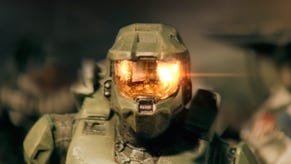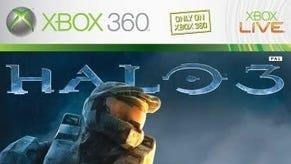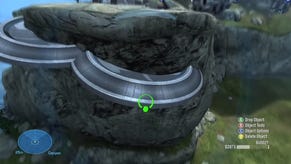Digital Foundry vs. Halo: Reach beta
Performance analysis, latency tests and more with tons of video to pore over.
On Thursday night UK time, Microsoft and Bungie began to distribute the first Xbox Live redeem codes for the long awaited Halo: Reach beta, and Digital Foundry was one of the first 300 to acquire access to the sampler.
You saw a selection of 40 screenshots taken in-game yesterday, and of course Eurogamer posted some of our most early video captures. 36 hours on, we're ready to present our first tech analysis based on hands-on gameplay.
In terms of the beta itself, currently we seem to be limited to eight-player action set over two different maps, featuring a range of team-based and lone-wolf game-types. First impressions are that this is indeed "Combat Evolved".
The Halo development team has taken the core strengths of what is a proven, hugely enjoyable multiplayer experience and built upon them, with greater degrees of player progression and customisation, along with specific loadouts that see the introduction of jetpacks and cloaking technology to name but two new innovations.
More detailed gameplay impressions will be forthcoming soon, but in the here and now Digital Foundry is more concerned with the brand new Halo: Reach engine that we have direct access to for the first time.
There was quite a lot of discussion in the comments section about the screenshots from the beta we posted yesterday, wondering if the game is 720p or not. Our contention is that it is indeed 720p in that there are 720 progressive lines of resolution. However, as per our analysis of the original alpha footage posted from Bungie's first ViDoc, horizontal resolution is slightly cut down, giving native rendering at 1152x720. Here's a couple of shots to look at.
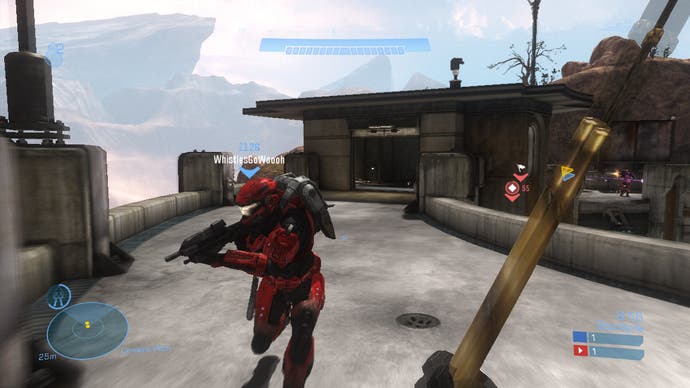
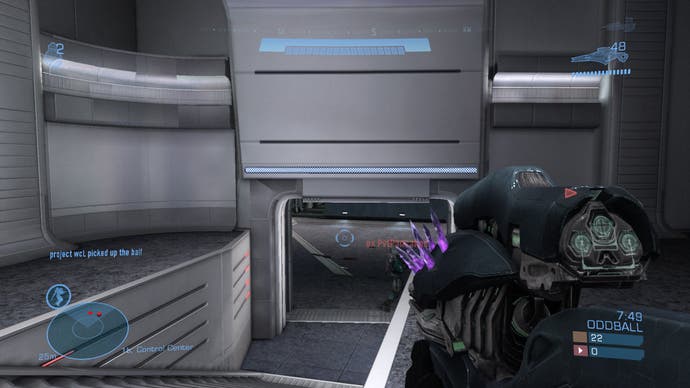
The first shows exactly the kind of clean edges we like to count pixels, and allows us to easily confirm the small reduction in horizontal resolution. But what's going on in the second shot? What should be offering up a range of easy-to-analyse edges proves to be more than challenging. Reach appears to be using an odd form of 2x temporal anti-aliasing. What this basically means is that two frames (generated with a slight time-shift) are blended together to form one image.
Different implementations of this technique have been seen in the PS3 version of Devil May Cry 4, and also in Metal Gear Solid 4: Guns of the Patriots. The upshot of this is that you get great edge-smoothing on static screens, but blending artifacts when in motion. Take a look at these shots:
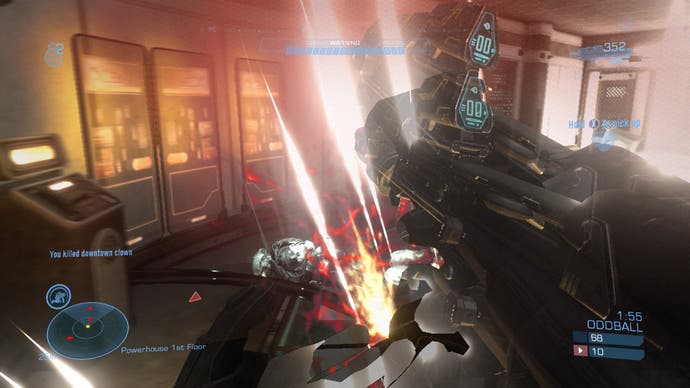

The view weapon is an ever-present focal point for the player, but as you can see, the frame-blending produces a remarkable effect that sees ghosting images appear prominently on the screen. We saw it in the beta footage posted in Bungie's second ViDoc and put that down to a poor downsampling of a 60FPS capture to the internet-standard 30FPS, but this is actually how the game looks, as the shots above demonstrate.
If there's one single complaint we have about the beta, this is it. The effect can look reminiscent of the ages old ghosting LCD problem - a technological era we don't really need reminding about!
Onto the performance element then. Halo: Reach shares much in common with its predecessor - it aims to maintain 30 frames per second, and for over 99 per cent of the time the engine maintains v-sync. Torn frames do crop up from time to time, but rarely appear in groups and pretty much always remain at the top of the screen, making them virtually unnoticeable. The way the engine drops frames when under stress does suggest v-sync, so the inclusion of any kind of tearing at all is something of a puzzle.
Here's a quick look at the Sword stage first of all, confirming the findings and exhibiting a performance profile very similar to what we've seen in our analysis of the developer diary footage we posted previously. For the vast majority of the time, the game seems to effortlessly maintain 30FPS, but during multiple explosions performance can be impacted.
Onto the second analysis video, this time of the Powerhouse level. It's an interesting change from the previous stage: showing how the new engine copes with outdoor environments while incorporating a decent range of close-quarters indoors fighting. Here we see a far more even performance compared to the previous stage, with the engine rarely dipped below 30FPS. A possible explanation is that the most intense combat is occurring in more confined spaces, automatically culling unseen elements that could cause engine stress.
It's clear to see that in just about every regard Halo: Reach has seen substantial tech upgrades compared to the old Halo 3 engine. Strong points of the old tech do remain: Reach possesses an impressive implementation of HDR for example, so the series' trademark use of colour is still in effect.
Indeed, this has been boosted with the inclusion of more dynamic lights. So, for example, every single projectile fired by the Needler has its own light source. On top of that, we can see a lot of other new features and improvements that have been added to enhance the overall look.





